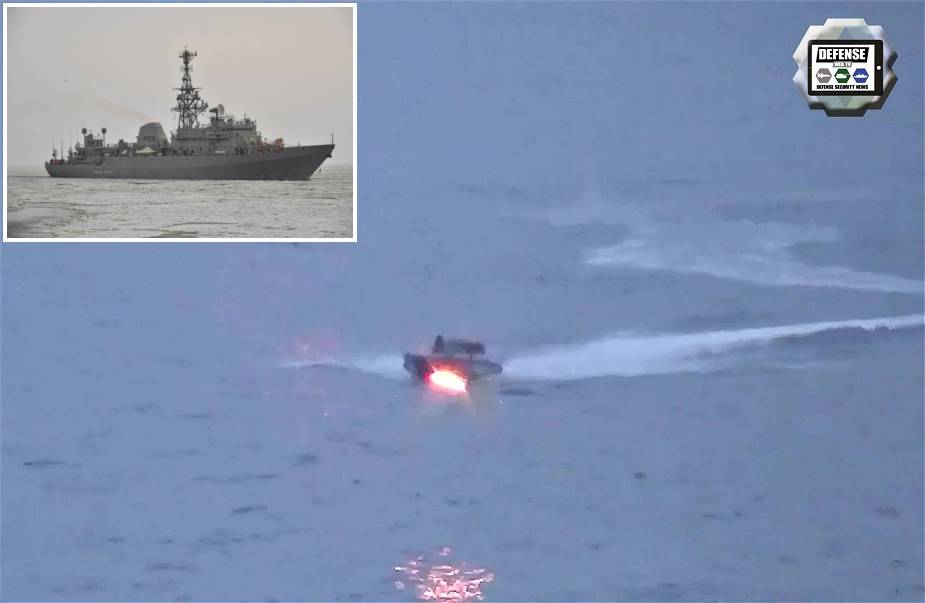The recent reports about Ukraine's unmanned drone boat attacking Russia's reconnaissance ship, "Ivan Khurs," in the Black Sea raise a variety of strategic and technical implications for the region's security situation. In this article, we explain the sequence of events that transpired during the drone boat attack.
Follow Navy Recognition on Google News at this link
 Russia's claim of destroying all three drone boats before reaching the Russian "Ivan Khurs" reconnaissance ship demonstrates their defensive measures against such threats. (Picture source Screen Shot Russian MoD Video )
Russia's claim of destroying all three drone boats before reaching the Russian "Ivan Khurs" reconnaissance ship demonstrates their defensive measures against such threats. (Picture source Screen Shot Russian MoD Video )
The attack, as reported by Ukraine's Defence Ministry, reveals the increasing use of unmanned maritime systems in military conflicts, particularly for asymmetric warfare. Ukraine's ability to potentially reach the Russian Navy reconnaissance ship "Ivan Khurs" with an unmanned speedboat suggests that the country has made significant advances in its drone technology. This ability can be used not only for direct attacks but also for surveillance and reconnaissance missions.
Russia's claim of destroying all three drone boats before reaching the "Ivan Khurs" demonstrates their defensive measures against such threats. Russia's ability to identify, track, and neutralize these relatively smaller, faster-moving targets underscores its readiness to defend against unconventional maritime threats.
The different narratives presented by Ukraine and Russia underscore the nature of information warfare, where each side aims to influence perceptions through their version of events. The Ukrainian video shows a drone boat getting close to the Russian ship, while the Russian Ministry claims to have destroyed all threats. The truth might lie somewhere in between, with possible damage to the ship that was not catastrophic or visible in the video.
This incident, irrespective of the exact details, shows an escalating conflict in the Black Sea region. Given the strategic importance of this sea for both Ukraine and Russia, further incidents of this nature could potentially escalate into larger conflicts.
The use of unmanned speedboats in military conflicts can have broader implications for maritime security. If they are indeed effective and start to become more commonplace, they could challenge traditional naval power structures and force changes in naval defense strategies worldwide. It's a development closely watched by navies and security agencies around the world.
In conclusion, while the incident remains shrouded in conflicting claims, it illustrates the evolving nature of naval warfare, the role of unmanned systems, and the high stakes involved in the Black Sea region's geopolitical tension.



